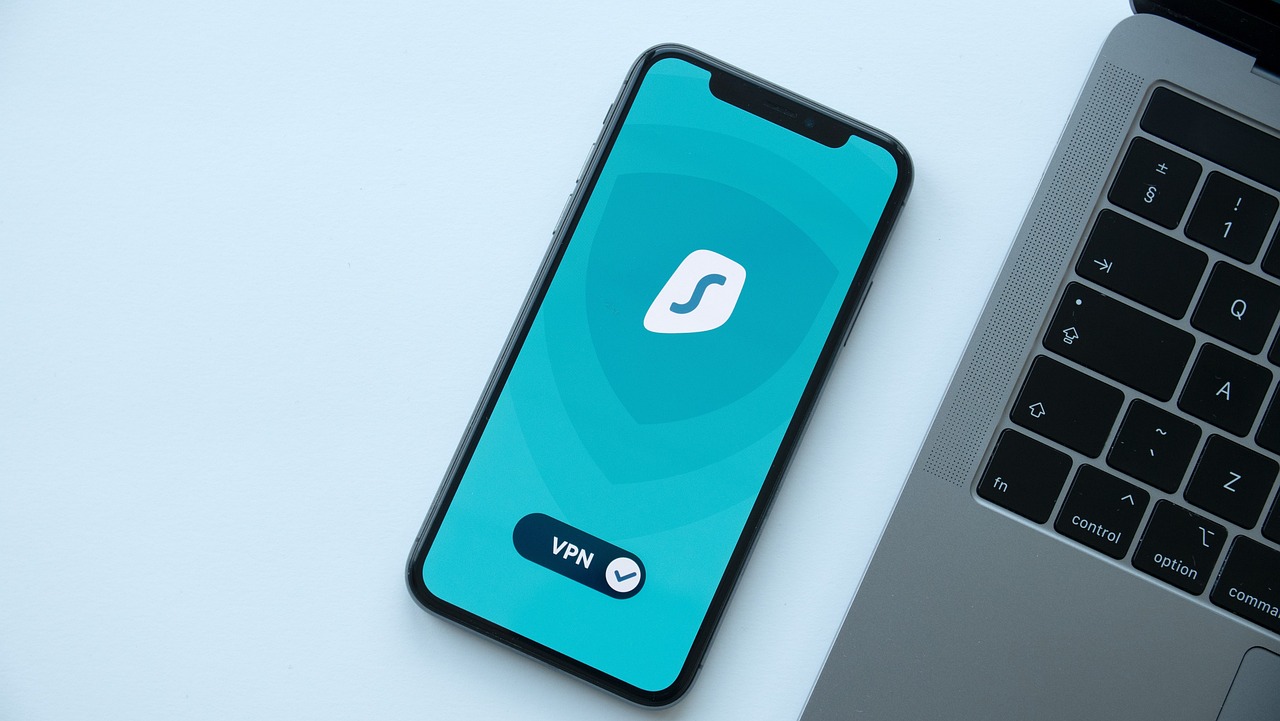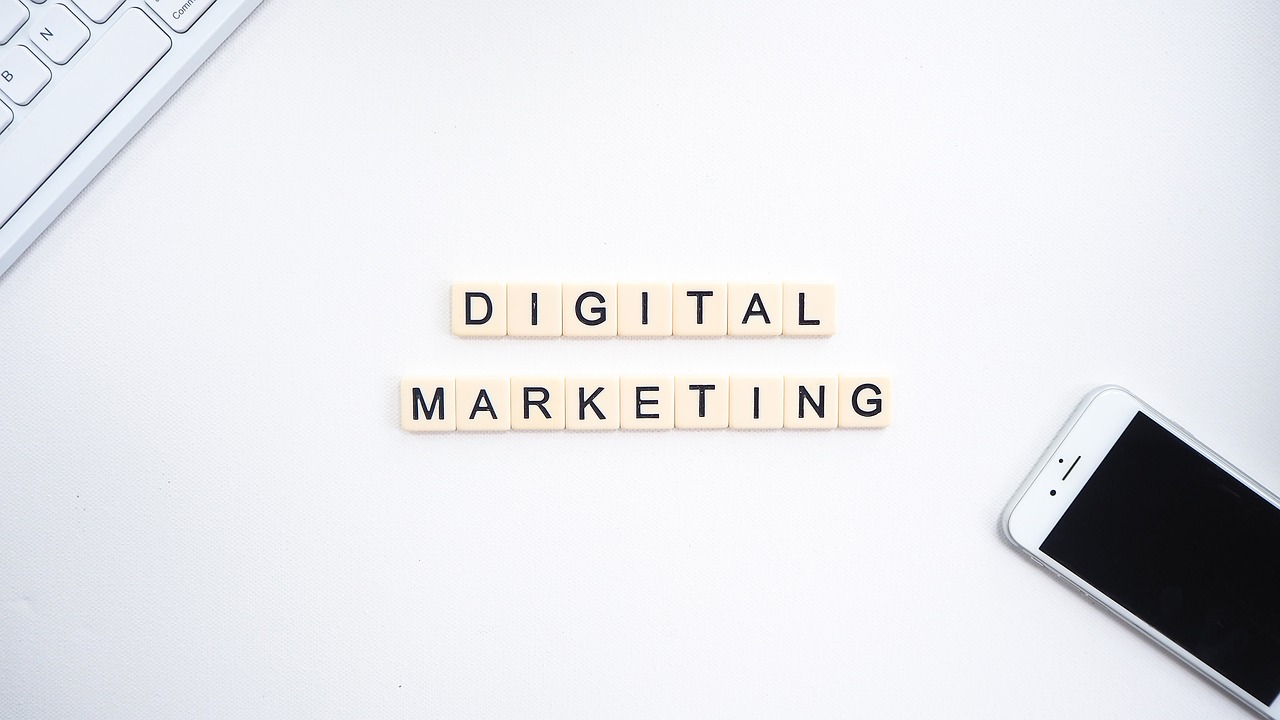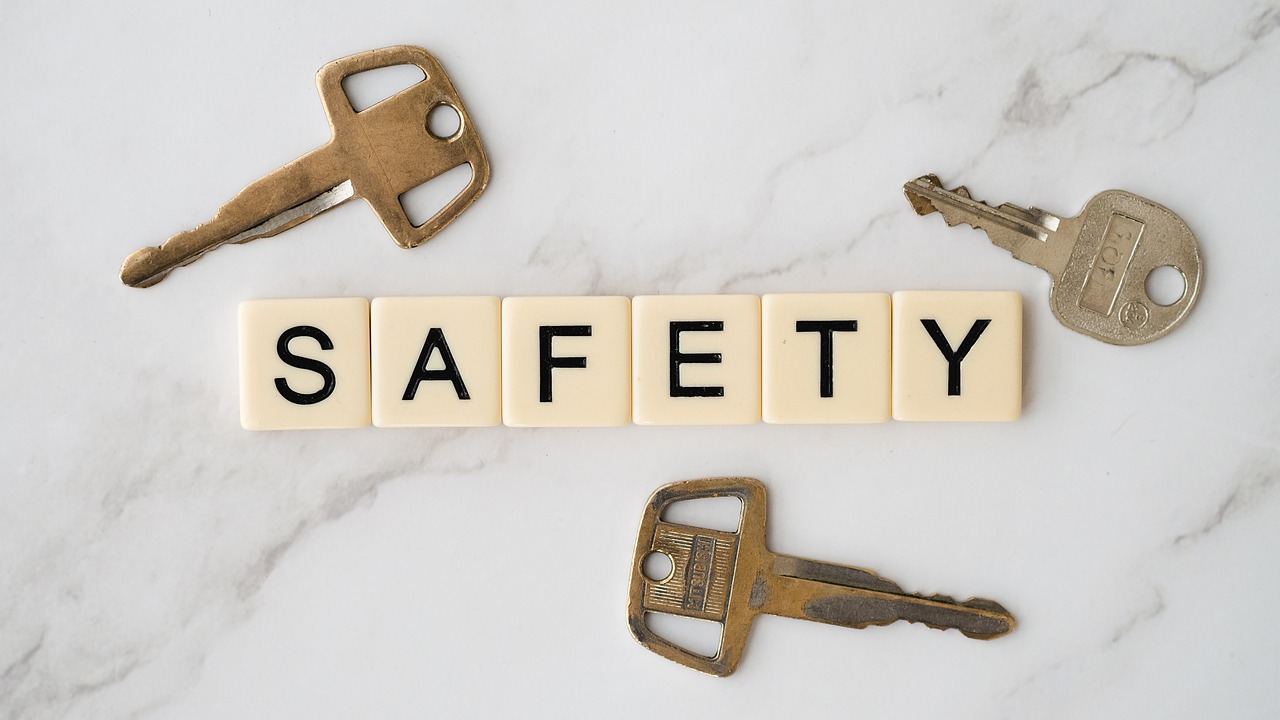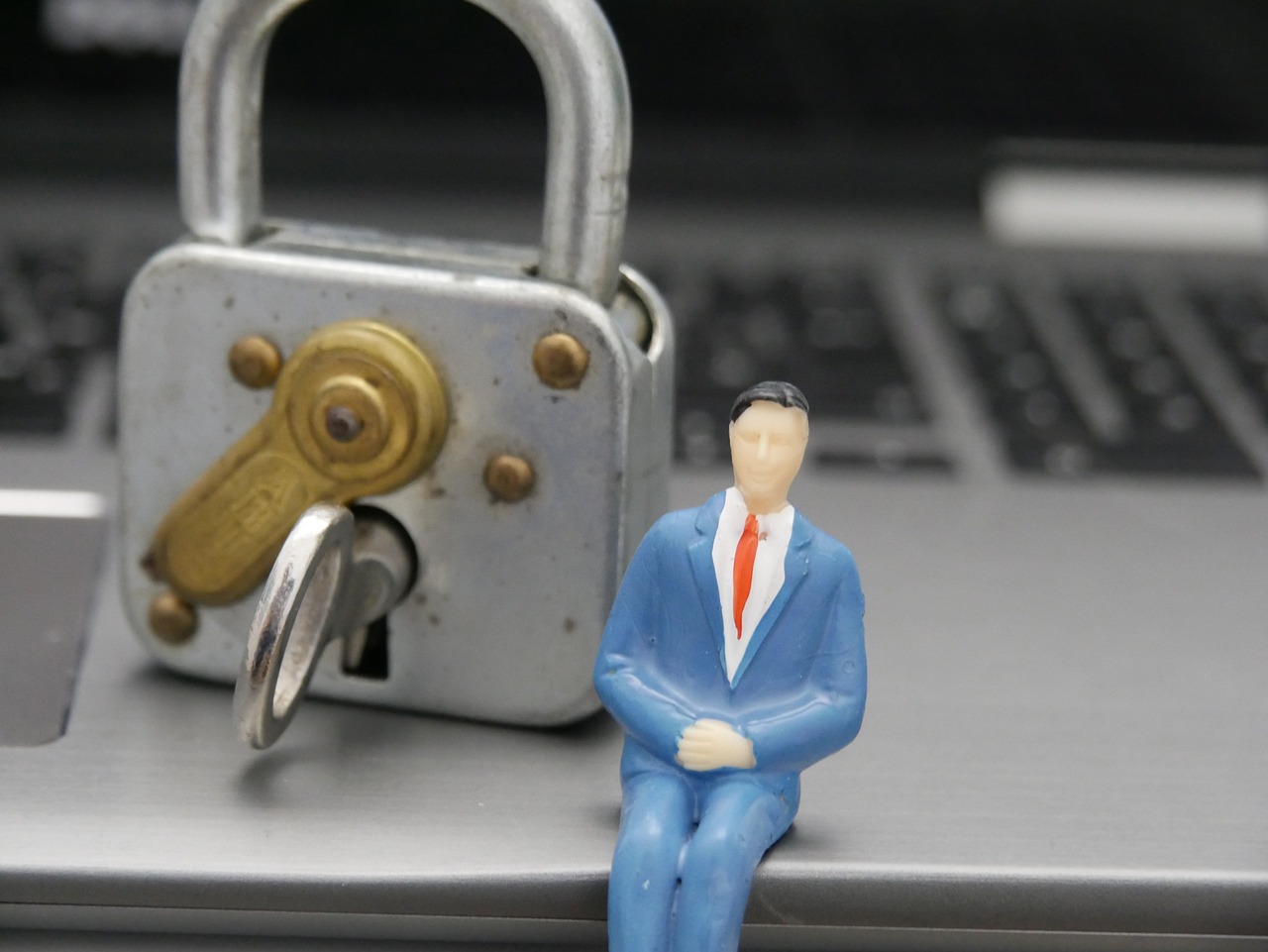How to Minimize Digital Footprints
In today's hyper-connected world, our lives are increasingly intertwined with the digital realm. Every click, like, and share contributes to what is known as our digital footprint. This footprint is essentially a trail of data that reflects our online activities and behaviors. As we navigate through social media, online shopping, and various websites, it becomes crucial to understand how to minimize this footprint to protect our personal information and enhance our privacy. The good news? There are effective strategies to help you reduce your online presence without sacrificing your digital life.
First off, let's address the elephant in the room: why should we care about our digital footprints? Imagine walking through a park, leaving behind footprints in the sand. Each step you take is visible to anyone who passes by. Similarly, your online activities can be tracked and monitored, often without your consent. This can lead to unwanted advertising, data breaches, and even identity theft. By minimizing your digital footprint, you are not only safeguarding your privacy but also taking control of your personal information.
To effectively minimize your digital footprint, it’s essential to first understand what it consists of. Your digital footprint can be categorized into two main types: active and passive. Active footprints are those you intentionally create, such as social media posts, blog comments, and online purchases. On the other hand, passive footprints are generated without your direct input, like cookies tracking your browsing history. Recognizing these footprints is the first step towards reducing them.
As you embark on this journey to a more private online presence, consider the following strategies:
- Limit Social Media Exposure: Adjust your privacy settings and think twice before sharing personal information.
- Delete Unused Accounts: Regularly audit your online accounts and remove those you no longer use.
- Practice Safe Browsing: Use VPNs and privacy-focused browsers to minimize tracking.
By actively engaging in these practices, you can significantly reduce your digital footprint and enhance your online security. Remember, minimizing your digital footprint is not just about privacy; it's about reclaiming your digital identity in an age where every click counts.
Q1: What is a digital footprint?
A digital footprint refers to the trail of data you leave behind while using the internet, including websites visited, emails sent, and social media interactions.
Q2: Why should I minimize my digital footprint?
Minimizing your digital footprint helps protect your personal information from potential threats such as identity theft, data breaches, and unwanted advertising.
Q3: How can I check my digital footprint?
You can use online footprint checkers that provide insights into your online visibility and suggest ways to reduce it effectively.
Q4: Are there tools to help me manage my digital footprint?
Yes, there are various tools available that can help you assess and manage your digital footprint, including privacy-focused browsers and VPNs.
Q5: Is it possible to completely erase my digital footprint?
While it's challenging to completely erase your digital footprint, you can significantly reduce it by following best practices for online privacy.

Understanding Digital Footprints
In today's digital landscape, our online activities leave behind a trail of information known as digital footprints. These footprints can be categorized into two main types: active and passive. Active footprints are those that we consciously create, such as posts on social media, comments on blogs, and the information we share when signing up for services. On the other hand, passive footprints are collected without our direct input, like data gathered by websites through cookies and tracking technologies.
The implications of these footprints can be significant. For instance, every click, every share, and every search can contribute to a digital profile that companies and advertisers use to target us with personalized content. While this might seem harmless, it raises serious concerns about privacy and security. Have you ever thought about how much of your personal information is out there for anyone to see? From your favorite hobbies to your location, the data can be used in ways you might not even anticipate.
Minimizing your digital footprint is essential for several reasons:
- Privacy Protection: Keeping your personal information under wraps helps safeguard you from identity theft and unwanted attention.
- Data Security: Reducing the amount of data available online decreases the chances of it being misused.
- Peace of Mind: Knowing that you have control over your digital presence can significantly reduce anxiety related to online activities.
Understanding the importance of managing your digital footprint is the first step towards achieving a more secure online experience. As we navigate through various platforms and services, it's crucial to be aware of what information we are sharing and with whom. In an era where data breaches and privacy concerns are rampant, taking proactive measures to minimize your digital footprint can make a world of difference.

Assessing Your Current Footprint
Before you can embark on the journey to minimize your digital footprint, it’s crucial to first understand its size and scope. Think of it as cleaning out a cluttered attic; you need to know what’s up there before you can decide what to keep and what to toss. The first step in this process is to assess your current online presence. This involves evaluating all the traces you leave behind as you navigate the digital landscape.
There are several effective tools and methods available that can help you gauge your digital footprint. These tools act like a magnifying glass, allowing you to see the extent of your online visibility. By understanding where you stand, you can identify the areas that need improvement and take action to enhance your privacy.
Online footprint checkers are designed to provide insights into your digital footprint. They analyze your online activities and compile a report detailing your visibility on various platforms. Some popular tools include:
- Google Yourself: Simply searching your name on Google can reveal a lot about your online presence.
- BrandYourself: This tool helps you manage your online reputation and provides a score based on your visibility.
- Social Search: This service can help you find out what information is available about you on social media platforms.
By utilizing these tools, you can gain a clearer picture of your digital footprint, including the websites that mention you, the social media profiles you maintain, and even public records that are accessible online.
Here’s a quick overview of some popular footprint assessment tools, highlighting their features and benefits:
| Tool Name | Features | Benefits |
|---|---|---|
| Google Alerts | Set alerts for your name or other keywords | Stay informed about new mentions of you online |
| BrandYourself | Online reputation management | Improve your online presence and control search results |
| Social Search | Analyze social media visibility | Understand how you appear on social platforms |
Using these tools can empower you to take control of your digital narrative. Once you have assessed your footprint, the next step is to interpret the results.
Interpreting the results from these footprint assessment tools is crucial. You’ll want to look for patterns in the data that indicate where your information is being shared and how it might be accessed by others. For instance, if you find that multiple social media profiles are publicly accessible, it might be time to tighten your privacy settings. Understanding this data can guide you in making informed decisions about your online activities and privacy measures.
Additionally, it’s essential to recognize specific areas where your digital footprint may be vulnerable. Common vulnerable areas include:
- Social media profiles that are public
- Old accounts that you no longer use
- Public records available online
By identifying these vulnerable areas, you can prioritize which aspects of your digital footprint you want to minimize or secure. Remember, the goal is not just to reduce your online presence but to enhance your overall privacy and security in an increasingly digital world.

Using Online Footprint Checkers
In our digital age, understanding your online presence is crucial, and that's where online footprint checkers come into play. These tools are designed to help you evaluate the extent of your digital footprint, offering insights into how much of your personal information is publicly accessible. Think of them as your personal digital detectives, uncovering the trails you've left behind across various platforms. Utilizing these checkers can be a game-changer in your quest for privacy, enabling you to identify areas where you might be oversharing or where your information could be vulnerable.
Many online footprint checkers operate by scanning the web for your name, email, or other identifying information. They can reveal a plethora of data, including social media profiles, blog posts, images, and even public records. This information can be quite eye-opening, as it highlights just how much of your life is available for anyone to see. Here are a few key features you might find in these tools:
- Search Results: They provide a comprehensive list of where your information appears online.
- Privacy Suggestions: Many tools offer recommendations on how to improve your privacy settings.
- Monitoring Services: Some checkers can alert you when new information about you appears online.
To get started, you’ll want to choose a reliable footprint checker. Here are some popular options:
| Tool Name | Features | Website |
|---|---|---|
| BrandYourself | Personal branding, privacy monitoring | brandyourself.com |
| Reputation Defender | Reputation management, online monitoring | reputationdefender.com |
| MyPrivacy | Data removal services, privacy score | myprivacy.com |
Once you’ve selected a tool, you can begin your assessment. Simply enter the necessary information, like your name or email address, and let the checker do its magic. After you receive your results, take a moment to reflect on what they mean. Are there profiles you didn’t know existed? Are there old accounts that could be deleted? This process can be enlightening and a bit overwhelming, but it’s an essential step toward taking control of your digital identity.
In conclusion, using online footprint checkers is a proactive approach to managing your digital presence. By regularly assessing your footprint, you empower yourself to make informed decisions about your online activities and privacy measures. Remember, knowledge is power, and in the realm of digital privacy, it’s your best defense against unwanted exposure.

Popular Footprint Assessment Tools
In today’s digital age, understanding your online presence is crucial, and using the right tools can make all the difference. There are several available that can help you evaluate your digital footprint effectively. These tools not only provide insights into your online visibility but also suggest practical ways to minimize it. Here are some of the most widely used tools:
- Google Search: Start with a simple search of your name or email address. This can reveal what information is publicly available about you.
- BrandYourself: This tool allows you to manage your online reputation by providing a comprehensive report on your digital footprint and offering recommendations for improvement.
- DeleteMe: If you find personal information on people search sites, DeleteMe can help you remove it. This service focuses on enhancing your privacy by eliminating unwanted data.
- Social Search: This tool specializes in searching social media platforms, helping you identify what personal information is shared across various networks.
Using these tools can provide a clearer picture of your digital landscape. For instance, BrandYourself not only assesses your current online presence but also offers actionable steps to improve your privacy. Similarly, DeleteMe can be a game-changer for those who are concerned about personal information being easily accessible. Moreover, by utilizing Google Search, you can directly see how the world perceives you based on the information available online.
Understanding the features of these tools is essential for effective management of your digital footprint. Most of them come with user-friendly interfaces, making it easy for anyone to navigate and interpret the results. For example, Social Search can highlight specific social media profiles that may contain sensitive information, allowing you to take immediate action. In contrast, DeleteMe focuses on removing your data from unwanted sites, giving you peace of mind.
In summary, leveraging these popular footprint assessment tools can empower you to take control of your digital identity. By regularly checking your online presence and implementing the recommendations provided, you can significantly reduce your digital footprint, enhancing your overall privacy and security.
Q: Why should I assess my digital footprint?
A: Assessing your digital footprint helps you understand what information is available about you online, allowing you to take steps to protect your privacy.
Q: How often should I check my digital footprint?
A: It's advisable to check your digital footprint at least once every few months, especially if you frequently engage in online activities.
Q: Can I completely erase my digital footprint?
A: While it's difficult to completely erase your digital footprint, you can significantly minimize it by using the right tools and strategies.
Q: Are there any free tools available for assessing my digital footprint?
A: Yes, tools like Google Search and some basic privacy checkers can be used for free to assess your online presence.

Interpreting Assessment Results
Once you've utilized online footprint assessment tools, the next step is to make sense of the data you've gathered. Interpreting these results is crucial for understanding your digital presence and making informed decisions about your online activities. Each tool may present its findings in different formats, but generally, you can expect to see metrics related to your online visibility, the number of accounts linked to your identity, and the types of information that are publicly accessible.
Start by analyzing the overall score or rating provided by the tool. A higher score typically indicates a larger digital footprint, which means you might need to take action to minimize your online presence. Look for specific metrics such as:
- Number of Public Accounts: This shows how many accounts are visible to the public. The more accounts you have, the greater your exposure.
- Data Breaches: Some tools will inform you if your information has been involved in any data breaches, which is a critical red flag.
- Social Media Activity: This metric assesses how active you are on social media platforms, which can contribute significantly to your digital footprint.
Next, delve into the specific areas where your information is exposed. For instance, if the assessment highlights that your social media profiles are publicly accessible, consider adjusting your privacy settings. You might find that certain posts or photos are visible to anyone on the internet, which could be a concern for your privacy.
Additionally, pay attention to the suggestions provided by the tool. Most assessment tools offer actionable insights to help you reduce your footprint. This could range from deleting old accounts to modifying your privacy settings. Prioritize these recommendations based on their potential impact on your digital presence.
Lastly, keep in mind that interpreting assessment results is not a one-time task. Regularly revisiting these tools can help you stay informed about your digital footprint. As you make changes, reassess your online presence to see the effects of your efforts. This ongoing process can significantly enhance your online privacy and security.
1. What is a digital footprint?
A digital footprint is the trail of data you leave behind when you use the internet. This includes everything from social media posts to online purchases.
2. Why is it important to minimize my digital footprint?
Minimizing your digital footprint is essential for protecting your privacy and personal information. A smaller footprint reduces the risk of identity theft and unwanted exposure.
3. How often should I assess my digital footprint?
It's advisable to assess your digital footprint at least once a year or whenever you make significant changes to your online presence, such as creating or deleting accounts.
4. Can I completely eliminate my digital footprint?
While it's challenging to eliminate your digital footprint entirely, you can significantly reduce it by deleting unused accounts and adjusting privacy settings.
5. What tools can help me assess my digital footprint?
There are several online tools available, such as PrivacyDuck, DeleteMe, and MyPrivacy, which can help you evaluate and manage your digital footprint effectively.

Identifying Vulnerable Areas
In our hyper-connected world, the digital footprint we leave behind can often resemble a trail of breadcrumbs leading directly to our personal lives. Understanding where these vulnerable areas exist is crucial for anyone looking to safeguard their online presence. Digital vulnerabilities can manifest in various forms, and recognizing them is the first step towards minimizing exposure and enhancing privacy.
One of the most significant sources of vulnerability is social media profiles. Many users unknowingly share a plethora of personal information, from their full names and birthdates to locations and even daily activities. This information can be easily accessed by anyone, including potential cybercriminals. Therefore, it’s essential to regularly review your social media settings and ensure that your profiles are as private as possible.
Another area to consider is online accounts. Think about all the websites and services you've signed up for over the years. Each account can be a potential entry point for hackers if they are not managed properly. Many people create accounts for one-time use and then forget about them, leaving them exposed to data breaches. Identifying these accounts and taking steps to delete or secure them can significantly reduce your digital footprint.
Additionally, public records can sometimes be overlooked. Information such as court records, property ownership, and even voter registration can be accessed by the public, depending on local laws. It’s crucial to understand what information is publicly available and take action to limit unnecessary exposure. In some cases, you might even be able to request the removal of certain records.
To help visualize these vulnerable areas, consider the following table:
| Vulnerable Area | Description | Action Steps |
|---|---|---|
| Social Media Profiles | Accounts where personal information is shared publicly. | Adjust privacy settings and limit information shared. |
| Online Accounts | Unused accounts that may contain personal data. | Identify and delete unused accounts. |
| Public Records | Information accessible to the public, like court records. | Review and request removal of sensitive records if possible. |
By being aware of these vulnerable areas and taking proactive steps, you can significantly reduce the risks associated with your digital footprint. Remember, it’s not just about minimizing your online presence; it’s about taking control of your digital identity and ensuring that your personal information remains private.
Q: What is a digital footprint?
A: A digital footprint is the trail of data you leave behind while using the internet, including websites visited, emails sent, and information submitted online.
Q: Why is it important to minimize my digital footprint?
A: Minimizing your digital footprint helps protect your personal information from potential cyber threats and enhances your overall online privacy.
Q: How can I assess my current digital footprint?
A: You can use online footprint checkers to evaluate your online presence and identify areas that may need improvement.
Q: Are there tools to help manage my online accounts?
A: Yes, password managers can help you keep track of your online accounts and assist in deleting or securing those you no longer use.

Strategies for Reducing Your Footprint
In today’s hyper-connected world, minimizing your digital footprint is not just a trend; it’s a necessity. With every click, like, and share, you leave behind a trail of data that can be tracked and analyzed. So, how can you effectively reduce this footprint and protect your privacy? Let’s dive into some practical strategies that can help you reclaim your online presence.
First and foremost, consider limiting your social media exposure. Social media platforms are notorious for collecting vast amounts of personal information. Start by reviewing your privacy settings—make sure they are as tight as possible. You might be surprised at the amount of personal information you’ve inadvertently shared. For instance, do you really need to share your location every time you post? By reducing the amount of personal information you share, you can significantly decrease your digital footprint.
Another effective strategy is to delete unused accounts. Think about it: how many online accounts do you have that you haven’t touched in years? These dormant accounts can be a goldmine for data collectors. Take the time to identify these accounts and delete them. Not only does this reduce your digital footprint, but it also minimizes the risk of your data being compromised. You can use tools like AccountKiller or JustDelete.me to help you find and delete these accounts easily.
Next, let’s talk about practicing safe browsing habits. Your online activities can leave traces that contribute to your digital footprint. One of the best ways to protect your privacy while browsing is by using a VPN (Virtual Private Network). A VPN encrypts your internet connection, making it much harder for anyone to track your online activities. Additionally, consider using privacy-focused browsers like Brave or Firefox that block trackers and ads by default, further enhancing your online security.
Moreover, regularly reviewing your privacy settings on various platforms is crucial. Many websites update their policies and settings frequently, which means the privacy settings you configured a year ago may no longer be effective. By staying proactive and adjusting your privacy settings, you can control what information you share and with whom. This vigilance is your first line of defense against unwanted data collection.
Lastly, understanding data sharing policies is essential. Many users click “Agree” without reading the fine print. Take the time to read these policies; they often contain valuable information about how your data is used and shared. Understanding these policies can empower you to make informed decisions about your online activities and help you navigate the digital landscape more safely.
By implementing these strategies—limiting social media exposure, deleting unused accounts, practicing safe browsing habits, regularly reviewing privacy settings, and understanding data sharing policies—you can significantly reduce your digital footprint. Remember, in the digital age, knowledge is power, and the more you know about your online presence, the better you can protect it.
- What is a digital footprint? A digital footprint is the trail of data you leave behind while using the internet, including your social media activity, websites visited, and online purchases.
- Why is it important to minimize my digital footprint? Minimizing your digital footprint enhances your privacy and security, making it harder for data collectors and hackers to access your personal information.
- How often should I review my privacy settings? It’s a good practice to review your privacy settings at least once a month or whenever there are significant updates to the platforms you use.

Limiting Social Media Exposure
In today's hyper-connected world, social media is like a double-edged sword. While it offers a platform to connect, share, and engage, it also opens the door to potential privacy risks. To truly minimize your digital footprint, it's essential to take proactive steps in managing your social media presence. So, how can you effectively limit your exposure? Let's dive in!
First and foremost, adjusting your privacy settings is crucial. Most social media platforms allow you to customize who can see your posts, photos, and personal information. By setting your profile to private, you can control who has access to your content. This means that only your approved friends or followers can view your information, significantly reducing the chances of strangers accessing your data. Consider the following:
- Check your friend list regularly and remove any inactive or unknown contacts.
- Limit your posts to friends only, and avoid sharing sensitive information publicly.
- Be cautious about tagging locations or people in your posts, as this can give away more information than you realize.
Next up, think about the type of content you share. While it’s tempting to share every moment of your life, consider if it's necessary. Each post is a piece of your digital footprint. Are you posting something that adds value or simply filling a void? Ask yourself if sharing that vacation photo or dinner plate is worth the potential exposure. In this digital age, less can often be more!
Another effective strategy is to limit the amount of personal information you share in your profiles. For instance, instead of listing your full birth date, consider just the month and day. This not only protects your privacy but also makes it harder for identity thieves to gather information about you. Additionally, be wary of quizzes and games that ask for personal details; they may seem harmless but could be collecting data.
Finally, consider the impact of your interactions. Every comment, like, or share contributes to your digital footprint. Think before you engage—are you adding to a positive conversation or just fueling negativity? Your online interactions can reflect on your character and impact your privacy. By being mindful of your digital behavior, you can significantly reduce your footprint.
In conclusion, limiting your social media exposure is a vital step in safeguarding your digital identity. By adjusting privacy settings, being selective about your posts, minimizing personal information, and considering your interactions, you can take control of your online presence. Remember, in the vast digital landscape, it’s not just about what you share, but how you share it!
Q: How can I find my privacy settings on social media?
A: Most platforms have a dedicated settings section, usually found in your profile menu. Look for options labeled 'Privacy' or 'Account Settings' to adjust your preferences.
Q: Is it safe to use my real name on social media?
A: While using your real name can help friends find you, it also increases your visibility. Consider using a variation of your name or a nickname to maintain a level of anonymity.
Q: What should I do if I feel my privacy has been compromised?
A: Immediately change your passwords, review your privacy settings, and consider reporting any suspicious activity to the platform. Staying vigilant is key!

Deleting Unused Accounts
In today's digital age, it's not uncommon for us to create numerous online accounts for various services, social media platforms, and subscriptions. However, as time passes, many of these accounts become obsolete, serving no real purpose in our lives. In fact, keeping these unused accounts can significantly increase your digital footprint, making it easier for your personal information to be exposed. So, how do you effectively delete these accounts and minimize your online presence?
The first step in this process is to identify which accounts you no longer use. This might seem daunting, but it can be simplified by reviewing your email inbox for account confirmation messages or subscription notifications. You can also check your password manager if you use one, as it often stores login details for all your accounts. Once you've compiled a list of these unused accounts, you can proceed to delete them.
When deleting an account, it's important to follow the specific steps outlined by each service. Most platforms have a straightforward method for account deletion, often found in the settings or privacy section. However, some sites may make it more challenging to find this option. Here are a few common steps to keep in mind:
- Log in to the account you wish to delete.
- Navigate to the settings or account management section.
- Look for options like "Delete Account," "Close Account," or "Deactivate Account."
- Follow the prompts to confirm your choice. Often, you may be asked to provide a reason for leaving.
It's crucial to remember that some services may retain your data even after you delete your account. Therefore, you should review their data retention policies to understand what happens to your information post-deletion. If you find a service that keeps your data indefinitely, consider reaching out to them directly to request complete data removal.
Another important aspect to consider is the impact of deleting accounts on your online presence. For instance, if you delete an account linked to other services, you may lose access to certain features or content. Therefore, it’s wise to assess whether any of your accounts are interconnected before proceeding with deletion. A good practice is to take note of any important data or content you might want to save before you click that delete button.
In summary, regularly reviewing and deleting unused accounts is a proactive step towards minimizing your digital footprint. Not only does it help protect your personal information, but it also streamlines your online presence, making it easier to manage what you share and with whom. So, start your digital decluttering today, and enjoy a more secure online experience!
1. Why should I delete unused accounts?
Deleting unused accounts reduces your digital footprint, enhances your privacy, and minimizes the risk of identity theft.
2. How do I find out which accounts I have?
You can check your email for confirmation messages, use a password manager, or search your browser's saved passwords.
3. What if I can't find the delete option on a website?
If you can't find the delete option, check the website's help section or contact their customer support for assistance.
4. Will deleting an account remove all my data?
Not necessarily. Some services may retain your data even after you delete your account, so check their data retention policies.
5. Can I recover a deleted account?
Most services do not allow recovery after deletion, but some may provide a grace period where you can reactivate your account.

Practicing Safe Browsing Habits
In today's digital age, is not just a recommendation; it's a necessity. With the internet being an integral part of our lives, the risks associated with online activities have also surged. Think of your online presence as a house. If you leave the doors and windows wide open, you're inviting trouble. So, how can you fortify your online fortress? Let's dive into some effective strategies.
First and foremost, one of the simplest yet most effective ways to enhance your online safety is by using privacy-focused browsers. Unlike traditional browsers that may track your activities and collect your data, privacy-focused options are designed with your security in mind. They block trackers, minimize data collection, and often come with built-in tools to enhance your online anonymity. Popular choices include Brave, Firefox with privacy extensions, and DuckDuckGo browser. These tools can significantly reduce your digital footprint while you browse.
Another essential tool in your online safety kit is a Virtual Private Network (VPN). A VPN acts like a secure tunnel for your internet traffic, encrypting your data and masking your IP address. This means that even if you're connected to a public Wi-Fi network, your online activities remain private and secure. Imagine you're sending secret messages in a coded language that only you and your friend can understand—this is how a VPN operates. It adds an extra layer of security that makes it much harder for hackers or snoopers to access your information.
When browsing, it's also crucial to be aware of your surroundings—just like you would in a physical space. Always check the URL of the websites you visit. Look for HTTPS in the address bar; this indicates that the site is secure. If you see a padlock icon, that’s a good sign! However, if the site starts with HTTP instead of HTTPS, it’s best to proceed with caution as your data may not be secure. Additionally, avoid clicking on suspicious links or downloading files from unknown sources, as these can lead to malware infections.
Finally, let’s not forget about the importance of keeping your software up to date. Regular updates for your operating system, browsers, and applications are crucial as they often include security patches that protect against the latest threats. Think of it as regularly changing the locks on your doors to prevent intruders from getting in. Neglecting updates can leave you vulnerable to cyber attacks.
By implementing these safe browsing habits, you can significantly reduce your digital footprint and enhance your overall online security. Remember, being proactive about your online safety is the key to protecting your personal information in this increasingly digital world.
- What is a digital footprint? A digital footprint is the trail of data you leave behind while using the internet, including your social media activity, website visits, and online purchases.
- How can I check my digital footprint? You can use online footprint checkers or search your name on search engines to see what information is publicly available about you.
- Are privacy-focused browsers really effective? Yes, they are designed to minimize tracking and enhance your online privacy, making them a great choice for safe browsing.
- Do I really need a VPN? If you frequently use public Wi-Fi or want to keep your online activities private, a VPN is highly recommended for added security.

Using Privacy-Focused Browsers
In an age where your every click can be tracked, using privacy-focused browsers is like wearing a digital cloak of invisibility. These browsers are designed specifically to shield your online activities from prying eyes, making them a crucial tool for anyone serious about minimizing their digital footprint. But what exactly makes these browsers stand out from the crowd? Let's dive into the features that set them apart and why you should consider making the switch.
First and foremost, privacy-focused browsers typically come with built-in features that enhance your online security. For instance, they often block third-party trackers by default. This means that when you visit websites, you won’t be bombarded by ads that follow you around the internet. It’s like having a bouncer at the door of your online life, ensuring that only the guests you invite can come in. Popular options like Brave and Firefox Focus exemplify this approach by prioritizing user privacy and data protection.
Moreover, many of these browsers offer enhanced encryption features. This is crucial because it ensures that your data remains secure while traveling across the web. Imagine sending a postcard versus a sealed letter; the latter keeps your information much safer. With features like HTTPS Everywhere, which encrypts your connection to websites, you can browse knowing that your data is much harder to intercept.
Another significant advantage is the ability to use ad blockers and anti-tracking tools. These tools not only speed up your browsing experience by preventing unnecessary ads from loading, but they also minimize the amount of data that advertisers can collect about you. It’s like cleaning out your garage; once you remove the clutter, you can see what’s really important. You can browse freely without the constant reminder of your online shopping habits or other interests being tracked and compiled into a profile.
Now, you might be wondering, "Are there any downsides?" While privacy-focused browsers offer numerous benefits, they may not support all the extensions or features you find in mainstream browsers like Chrome or Safari. Some users might miss specific functionalities or the seamless integration with other services. However, the trade-off for enhanced privacy is often worth it. Just like choosing to drive a fuel-efficient car may mean sacrificing some speed, opting for a privacy-focused browser often means prioritizing security over sheer convenience.
In conclusion, if you're serious about protecting your digital identity, switching to a privacy-focused browser is a smart move. Not only do they provide robust features that enhance your online security, but they also empower you to take control of your personal information. As we navigate an increasingly digital world, these browsers serve as a vital line of defense against the invasive practices of data collection. So why not give one a try? You might find that the peace of mind is well worth the adjustment.
- What is a privacy-focused browser? A privacy-focused browser is designed to protect users' online activities from tracking and data collection. Examples include Brave, Firefox Focus, and DuckDuckGo.
- Do privacy-focused browsers block ads? Yes, many of these browsers come with built-in ad blockers that prevent unwanted advertisements from appearing.
- Are privacy-focused browsers slower than regular browsers? Generally, they may be slightly slower due to the additional security features, but the difference is often negligible compared to the benefits of enhanced privacy.
- Can I still use extensions with privacy-focused browsers? Some privacy-focused browsers support extensions, but not all may offer the same range as mainstream browsers.

Implementing VPNs for Privacy
In a world where our online activities are constantly monitored, implementing a Virtual Private Network (VPN) has become a necessity for anyone serious about their privacy. A VPN acts as a secure tunnel for your internet traffic, encrypting your data and masking your IP address. Imagine it as a cloak of invisibility that allows you to browse the web without leaving traces behind. By rerouting your connection through a server in a different location, a VPN not only keeps your data secure but also allows you to access content that may be restricted in your region.
One of the most significant benefits of using a VPN is the added layer of security it provides, especially when using public Wi-Fi networks. Public networks are notorious for being hotspots for hackers and cybercriminals. Without a VPN, your personal information could be easily intercepted. However, with a VPN in place, your data is encrypted, making it nearly impossible for anyone to decipher. This means you can enjoy that coffee at your local café without worrying about whether someone is snooping on your online activities.
When choosing a VPN service, consider the following factors to ensure you pick the right one for your needs:
- Privacy Policy: Look for a provider that has a strict no-logs policy, meaning they do not store any of your browsing history.
- Speed and Performance: A good VPN should not significantly slow down your internet speed. Check reviews to find one that balances speed with security.
- Server Locations: More server locations mean more options for bypassing geo-restrictions and accessing content from different countries.
- Compatibility: Ensure the VPN works on all your devices, whether it's a smartphone, tablet, or computer.
It's also essential to understand how to configure your VPN correctly. Most reputable VPN services provide easy-to-follow guides for installation on various devices. Once set up, you can select your preferred server and connect with just a click. However, be cautious about free VPNs, as they often come with hidden costs, such as data limits or intrusive ads. In many cases, you may be better off investing in a reliable paid service that prioritizes your privacy.
In conclusion, implementing a VPN is a powerful step towards safeguarding your online privacy. It not only protects your data from prying eyes but also enhances your browsing experience by granting you access to a world of content that may otherwise be out of reach. So, if you haven’t yet, consider adding a VPN to your digital toolkit—your future self will thank you!
1. What is a VPN?
A VPN, or Virtual Private Network, is a service that creates a secure connection over the internet, encrypting your data and masking your IP address.
2. Do I need a VPN if I have a secure internet connection?
Yes, even secure connections can be vulnerable to threats, especially on public Wi-Fi. A VPN adds an extra layer of protection.
3. Can I use a VPN on my smartphone?
Absolutely! Most VPN services offer apps for both Android and iOS devices, allowing you to secure your mobile browsing.
4. Will a VPN slow down my internet speed?
While some slowdown may occur due to encryption, a good VPN should minimize this impact. Always choose a reputable provider known for speed.
5. Are free VPNs safe to use?
Many free VPNs come with risks, including data logging and security vulnerabilities. It’s generally safer to opt for a paid service.

Managing Personal Information
In today's digital landscape, is more crucial than ever. With every click, like, and share, we leave behind a trail of data that can be exploited or misused. To effectively minimize your digital footprint, it's essential to take control of what information you share online and with whom. This not only enhances your privacy but also protects you from potential identity theft and unwanted solicitation.
One of the first steps in managing your personal information is to regularly review the privacy settings on all your social media accounts and online platforms. Many users overlook this aspect, leaving their profiles exposed to the public. By adjusting these settings, you can limit who sees your posts, personal details, and even your friend list. For instance, consider setting your profile to private, restricting access to only those you trust. This simple action can dramatically reduce your digital visibility.
Additionally, understanding data sharing policies is vital. Have you ever clicked "I agree" without reading the fine print? You're not alone! However, taking the time to read these policies can unveil how your data is collected, used, and shared. For example, some platforms may sell your data to third parties or use it for targeted advertising. By being informed, you can make conscious choices about which services to use and which to avoid.
To illustrate the importance of managing your personal information, consider the following table that outlines common types of personal data and their potential risks:
| Type of Personal Data | Potential Risks |
|---|---|
| Email Address | Spam, phishing attacks |
| Phone Number | Unwanted calls, identity theft |
| Home Address | Stalking, burglary |
| Social Security Number | Identity theft, fraud |
Moreover, it's beneficial to adopt a proactive approach by regularly auditing the information you have shared across various platforms. This means taking the time to delete old accounts you no longer use and removing unnecessary personal information from active accounts. For instance, if you have a social media account that you haven’t logged into for months, consider whether it’s worth keeping. Deleting such accounts not only reduces your digital footprint but also minimizes the chances of your data being compromised.
Finally, remember that managing your personal information is an ongoing process. As technology evolves, so do the threats to your privacy. Staying informed about the latest trends in digital privacy and regularly updating your practices can help you maintain control over your personal information. By implementing these strategies, you can significantly reduce your digital footprint and enhance your overall online security.
- What is a digital footprint? A digital footprint is the trail of data you leave behind while using the internet, which includes your social media activity, online purchases, and any information shared online.
- How can I check my digital footprint? You can use online footprint checkers or search for your name on search engines to see what information is publicly available about you.
- Why is managing personal information important? Managing personal information is crucial to protect your privacy, prevent identity theft, and control your online presence.
- What should I do if I find outdated or unwanted information about myself online? You can contact the website or platform to request removal, or adjust your privacy settings to limit visibility.

Reviewing Privacy Settings
In the digital age, where our every click can be tracked and our data can be harvested, is not just a good practice—it's essential for safeguarding your personal information. Each online platform, whether it's social media, email, or e-commerce, has its own set of privacy settings that determine how much of your information is shared with others. Ignoring these settings can lead to unintended exposure of your personal details, which can be exploited by malicious entities.
To effectively manage your privacy, start by navigating to the settings section of each platform you use. This is often found under a profile or account menu. Once there, take the time to thoroughly review each option. Here are some key areas to focus on:
- Profile Visibility: Check who can see your profile and posts. Adjust these settings to limit visibility to friends only or to a select group.
- Data Sharing: Look for options regarding how your data is shared with third parties. Opt-out of any unnecessary data sharing.
- Location Settings: Disable location tracking features unless absolutely necessary. This helps prevent your whereabouts from being tracked.
Additionally, many platforms now offer two-factor authentication as a security measure. Enabling this feature adds an extra layer of protection to your accounts, making it harder for unauthorized users to gain access. Remember, the more layers of security you have, the safer your digital footprint will be.
It’s also wise to revisit these settings periodically. Privacy policies and platform features change frequently, and what was secure last year may no longer provide the same level of protection today. By staying proactive and regularly reviewing your privacy settings, you can maintain control over your digital identity and significantly reduce your exposure online.
Here are some common questions regarding reviewing privacy settings:
- Why is it important to review privacy settings? Regularly reviewing your privacy settings helps ensure that your personal information is protected and only shared with trusted parties.
- How often should I check my privacy settings? It’s recommended to check your privacy settings at least every few months, or whenever there’s a significant update to the platform.
- What should I do if I find my information is publicly accessible? If you discover that your information is publicly accessible, immediately adjust your privacy settings and consider deleting any unnecessary posts or information.

Understanding Data Sharing Policies
In our digitally driven world, understanding data sharing policies is crucial for anyone looking to protect their privacy. These policies dictate how your personal information is collected, used, and shared by various platforms and services. It’s like reading the fine print on a contract—often tedious but absolutely necessary. Without a clear understanding, you might unknowingly give away more than you intended, leaving your data vulnerable to misuse.
When you sign up for an online service, you typically agree to their terms and conditions, which include their data sharing policies. These documents can be lengthy and filled with legal jargon, making it easy to overlook important details. However, taking the time to read and comprehend these policies can empower you to make informed decisions about what information you share. Here are some key components to look for:
- Data Collection: Understand what types of data are being collected. Is it just your email, or are they collecting location data, browsing habits, or purchase history?
- Data Usage: Determine how your data will be used. Will it be used for targeted advertising, sold to third parties, or used to improve services?
- Data Sharing: Check if your data will be shared with other companies or organizations. If so, who are they, and for what purpose?
- Data Retention: Look into how long your data will be stored. Is there a time limit, or will it remain indefinitely?
- Opt-Out Options: Find out if you have the option to opt-out of data collection or sharing, and how you can do this.
Many platforms have made strides in transparency, offering more accessible summaries of their data policies. However, it’s still your responsibility to dig deeper. For example, if a service claims to prioritize user privacy, look for specific commitments regarding data protection and sharing. You can often find this information in their privacy policy, typically linked at the bottom of their homepage.
Moreover, it’s essential to keep abreast of any changes to these policies. Companies frequently update their terms, sometimes in ways that could impact your privacy. Setting reminders to review these policies periodically can help you stay informed. If a policy change raises red flags, consider whether it's worth continuing to use that service.
In conclusion, understanding data sharing policies is not just about protecting your personal information; it’s about taking control of your digital identity. By being proactive and informed, you can navigate the online landscape with greater confidence and security.
1. Why should I care about data sharing policies?
Understanding data sharing policies helps you protect your personal information and make informed decisions about which services to use.
2. How often should I review data sharing policies?
It's advisable to review these policies regularly, especially when you notice updates or changes in the services you use.
3. What should I do if I disagree with a data sharing policy?
If you disagree with a policy, you have the option to stop using the service or adjust your privacy settings if possible.
4. Are there any tools to help me understand these policies?
Yes, some websites and tools summarize privacy policies, making it easier to grasp the key points without reading lengthy documents.

Staying Informed on Digital Privacy
In an age where our lives are intricately woven into the digital fabric, is not just a luxury; it's a necessity. With the rapid evolution of technology, new threats to our privacy emerge almost daily. So, how do we keep up? The first step is to actively engage with the resources available to us. Following influential figures in the privacy advocacy space can provide a wealth of knowledge and insights into the latest trends and threats. These advocates tirelessly work to protect our rights and often share valuable information through blogs, podcasts, and social media.
Moreover, joining online privacy communities is another effective way to stay informed. These platforms are often filled with like-minded individuals who share tips, experiences, and the latest news in digital privacy. Whether it's a forum, a Facebook group, or a subreddit, these communities can be a treasure trove of information. They allow you to ask questions, share concerns, and even learn from others' mistakes. It's like having a support group dedicated to navigating the complex world of online privacy!
Additionally, subscribing to newsletters from reputable organizations that focus on privacy issues can keep you updated on the latest developments. Many of these organizations offer free resources, including guides and reports, that can help you better understand the landscape of digital privacy. It’s essential to filter out the noise and focus on credible sources to avoid misinformation.
To give you a clearer idea, here’s a quick table of some notable privacy advocates and organizations that you might want to follow:
| Advocate/Organization | Description | How to Follow |
|---|---|---|
| Electronic Frontier Foundation (EFF) | A leading nonprofit defending civil liberties in the digital world. | Website, Twitter, Newsletter |
| Privacy International | An organization that campaigns for the right to privacy across the globe. | Website, Twitter, Facebook |
| Bruce Schneier | Renowned security technologist and author. | Blog, Twitter |
| Mozilla Foundation | Advocates for an open and accessible internet. | Website, Twitter, Newsletter |
In conclusion, staying informed about digital privacy is an ongoing journey. By following advocates, engaging in communities, and subscribing to credible resources, you can arm yourself with the knowledge needed to navigate the complex digital landscape. Remember, knowledge is power, and in the realm of digital privacy, it can be your strongest ally.
Q: Why is digital privacy important?
A: Digital privacy is crucial because it protects your personal information from unauthorized access and misuse, helping to safeguard your identity and personal security.
Q: How can I stay updated on privacy issues?
A: You can stay updated by following privacy advocates, joining online communities, and subscribing to newsletters from reputable organizations focused on digital privacy.
Q: What are some practical steps I can take to enhance my digital privacy?
A: You can enhance your digital privacy by adjusting privacy settings on social media, using privacy-focused browsers, and regularly reviewing your online accounts.

Following Privacy Advocates
In a world where our personal data is constantly at risk, can be a game changer. These individuals and organizations are at the forefront of the fight for digital privacy, offering invaluable insights and resources that can help you navigate the complex landscape of online security. But who are these advocates, and why should you pay attention to them?
Privacy advocates come from various backgrounds, including technology, law, and activism. They work tirelessly to raise awareness about the importance of protecting personal information and often provide practical advice on how to do so. By following their work, you can stay updated on the latest trends, tools, and techniques for minimizing your digital footprint.
For example, influential figures like Edward Snowden and organizations such as the Electronic Frontier Foundation (EFF) are dedicated to promoting privacy rights and challenging invasive surveillance practices. Engaging with their content not only informs you about potential threats but also empowers you to take action in your own life.
Additionally, many privacy advocates share tips on social media platforms, blogs, and podcasts. Here are some ways to stay connected:
- Social Media: Follow privacy advocates on platforms like Twitter, where they often share real-time updates and resources.
- Newsletters: Subscribe to newsletters from organizations focused on digital rights to receive curated information directly to your inbox.
- Webinars and Workshops: Participate in online events where experts discuss current privacy issues and offer practical advice.
By actively engaging with these resources, you not only enhance your understanding of digital privacy but also contribute to a larger movement advocating for consumer rights. Remember, knowledge is power, and in the realm of digital privacy, it can be your best defense against unwanted surveillance and data breaches.
Q1: Who are some notable privacy advocates I should follow?
A1: Some notable privacy advocates include Edward Snowden, Bruce Schneier, and organizations like the Electronic Frontier Foundation (EFF) and Privacy International.
Q2: How can I stay updated on privacy issues?
A2: You can stay updated by following privacy advocates on social media, subscribing to newsletters, and participating in online webinars and discussions.
Q3: Why is it important to follow privacy advocates?
A3: Following privacy advocates helps you stay informed about current threats to your personal data and provides you with tools and strategies to protect your digital identity.

Engaging in Online Privacy Communities
In today’s digital age, engaging in online privacy communities is not just a trend; it’s a necessity. These communities serve as a safe haven for individuals who are concerned about their digital footprints and want to learn how to protect their personal information. By joining these groups, you can connect with like-minded individuals who share your passion for privacy and security. Imagine walking into a room filled with people who understand your concerns about data breaches and online tracking—this is what online privacy communities offer.
One of the most significant benefits of participating in these communities is the wealth of knowledge they provide. Members often share their experiences, tips, and resources that can help you navigate the complex landscape of digital privacy. From discussions about the latest privacy tools to advice on managing social media accounts, the insights gained from these interactions can be invaluable. You might even discover new strategies that you hadn’t considered before!
Furthermore, online privacy communities often host webinars, workshops, and discussions led by experts in the field. These events can provide you with a deeper understanding of privacy issues and the tools available to combat them. By actively participating, you can ask questions, share your concerns, and get real-time feedback from those who are knowledgeable about the subject. This interactive learning experience can be far more effective than reading articles or watching videos alone.
Another essential aspect of these communities is the support system they create. Navigating digital privacy can feel overwhelming, especially with the constant changes in technology and regulations. Being part of a community allows you to seek advice and support from others who are on the same journey. You can share your successes, learn from failures, and feel encouraged to continue improving your online privacy practices.
To find the right online privacy community for you, consider exploring various platforms, such as:
- Reddit: Subreddits like r/privacy and r/cybersecurity offer discussions on a wide range of privacy-related topics.
- Facebook Groups: Look for groups dedicated to digital privacy where members share resources and advice.
- Discord Servers: Many tech-savvy individuals gather on Discord to discuss privacy tools and share tips.
- Forums: Websites like PrivacyTools.io have forums where users can engage in discussions about privacy practices.
As you engage in these communities, remember that the goal is not just to consume information but also to contribute. Sharing your knowledge and experiences can help others while reinforcing your understanding. In essence, being an active participant in these communities transforms you from a passive learner into an advocate for privacy.
In summary, engaging in online privacy communities is a proactive step towards safeguarding your digital identity. They provide a platform for learning, sharing, and supporting one another in the quest for better privacy practices. So, dive in, connect with others, and take charge of your online presence!
Q: What are online privacy communities?
A: Online privacy communities are groups of individuals who share a common interest in protecting their digital privacy. They provide a platform for discussion, sharing resources, and supporting one another in privacy-related matters.
Q: How can I find online privacy communities?
A: You can find online privacy communities on platforms like Reddit, Facebook, Discord, and specialized forums focused on digital privacy.
Q: What are the benefits of joining these communities?
A: Joining online privacy communities allows you to gain knowledge, share experiences, receive support, and participate in discussions with others who are passionate about privacy.
Q: Can I contribute to these communities?
A: Absolutely! Most communities encourage members to share their experiences, knowledge, and resources. Your contributions can help others and enhance your understanding of privacy issues.
Frequently Asked Questions
- What is a digital footprint?
A digital footprint is the trail of data you leave behind while using the internet. This includes everything from the websites you visit to the social media posts you make. It's like a digital breadcrumb trail that can be tracked by others, which is why it's essential to be mindful of what you share online.
- Why should I minimize my digital footprint?
Minimizing your digital footprint is crucial for protecting your privacy and personal information. In an age where data breaches and identity theft are rampant, reducing your online presence can help safeguard you from potential threats. Think of it as cleaning up your digital closet—keeping only what’s necessary and secure.
- How can I assess my current digital footprint?
You can assess your digital footprint by using various online footprint checkers. These tools analyze your online presence and provide insights into what information is publicly available about you. It's like getting a digital health check-up to see where you stand!
- What are some effective strategies to reduce my digital footprint?
Some effective strategies include limiting your social media exposure, deleting unused accounts, and regularly reviewing your privacy settings. By taking these steps, you can significantly reduce the amount of personal information accessible to others.
- What are privacy-focused browsers?
Privacy-focused browsers are designed to enhance your online security by minimizing tracking and protecting your data from advertisers. Browsers like Brave or Firefox focus on user privacy, making them great tools for anyone looking to reduce their digital footprint.
- How do VPNs help protect my online activities?
Virtual Private Networks (VPNs) create a secure connection between your device and the internet, encrypting your data and masking your IP address. This means that your online activities are much harder to track, adding an extra layer of privacy to your browsing experience.
- What should I know about data sharing policies?
Data sharing policies explain how companies collect, use, and share your personal information. Understanding these policies can empower you to make informed decisions about what data you share and with whom, ensuring you maintain control over your personal information.
- How can I stay informed about digital privacy issues?
Staying informed about digital privacy issues can be achieved by following privacy advocates, reading articles, and engaging in online privacy communities. These resources can keep you updated on the latest trends and best practices for protecting your digital identity.



















